Sonic 2003 Annual Report Download
Download and view the complete annual report
Please find the complete 2003 Sonic annual report below. You can navigate through the pages in the report by either clicking on the pages
listed below, or by using the keyword search tool below to find specific information within the annual report.
-

1
-
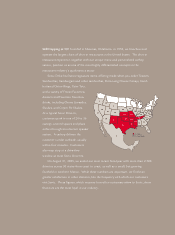
2
-

3
-
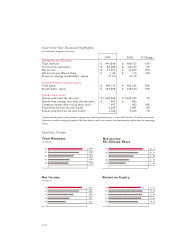
4
-
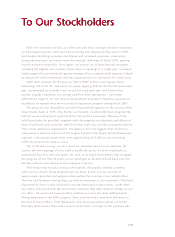
5
-

6
-

7
-
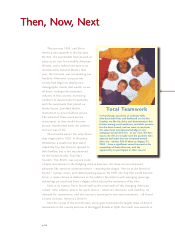
8
-
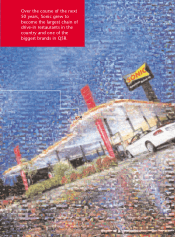
9
-
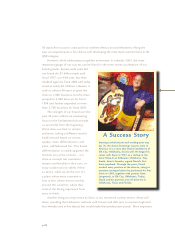
10
-

11
-

12
-

13
-

14
-

15
-

16
-

17
-

18
-

19
-

20
-

21
-

22
-

23
-

24
-

25
-

26
-

27
-

28
-

29
-

30
-

31
-

32
-

33
-

34
-

35
-

36
-

37
-

38
-

39
-

40
-

41
-

42
-

43
-

44
-

45
-

46
-

47
-

48
-

49
-

50
-

51
-

52
Table of contents
-
Page 1
-
Page 2
... in the restaurant industry's quick-service sector. Sonic Drive-Ins feature signature items, offering made-when-you-order Toaster® Sandwiches, hamburgers and other sandwiches, Extra-Long Cheese Coneys, handbattered Onion Rings, Tater Tots, and a variety of Frozen Favorites® desserts and Fountain...
-
Page 3
of creating
50 years
opportunities
-
Page 4
...2003 Operations (for the year) Total revenues Income from operations Net income Net income per diluted share Return on average stockholders' equity Financial Position (at year's end) Total assets Stockholders' equity System Information* System-wide sales (for the year) System-wide average unit sales...
-
Page 5
... to meet the unusual challenges of fiscal 2003, posting record revenues and profits. Once again, our proven set of multi-layered strategies, including the highest ever number of new drive-in openings in a single year, increased media support for our brand and greater leverage of our corporate-level...
-
Page 6
... emphasis on network cable advertising to reach new audiences and to provide better support for Sonic in developing markets, should drive sales growth in the coming year. Combine those strategies with a strong development program in fiscal 2004, its related impact on franchising income, and our...
-
Page 7
With the conclusion of this, our 50th year, the Sonic concept and the innovations we have helped pioneer continue to be as strong and relevant as they were in 1953.
-
Page 8
...early innovations in the fledgling drive-in business. His drive-ins soon featured advances like intercom communications - inspiring the slogan "Service at the Speed of Sound," canopy covers, and slanted parking spaces. By 1959, the Top Hat would become Sonic, a name chosen in deference to the public...
-
Page 9
Over the course of the next 50 years, Sonic grew to become the largest chain of drive-in restaurants in the country and one of the biggest brands in QSR.
-
Page 10
... is Longworth, in Elk City, Oklahoma. Today, David and his partners own 35 drive-ins in first in line, where service revolves Oklahoma, Texas and Florida. around the customer, where they control the dining experience from start to finish. Another thing you may notice at Sonic is our renowned carhop...
-
Page 11
Our carhops help ensure a level of service and attention, during and after the meal, that just can't be equaled by other quick-service restaurants.
-
Page 12
... as much about the chain as anyone and he's never worked a day directly for the brought that same innovative thinking company. He has, however, been a key to the morning day part, with a Sonic supply partner for almost 50 years. Bob's first contact with our company came in 1955 twist on the usual...
-
Page 13
Everything at Sonic is made when you order, using the freshest, highestquality ingredients we can find. We think our customers can taste the difference.
-
Page 14
... and new markets. These plans for growth affect our operations - and our future - in several ways. First, they link directly with our strategies to increase average unit volume and stimulate same-store sales growth, ultimately driving profits higher and strengthening our brand awareness. To help us...
-
Page 15
Here you'll find an eclectic menu that extends the usual quickserve selection with our unique signature items. Now, we've brought that same innovative thinking to the morning day part.
-
Page 16
... grows, we benefit from franchise fees on new locations. With increasing average unit volumes, our royalty income also grows because of our unique system for ascending royalty payments. Additionally, company-owned drive-in development provides cohesion for the growth of our brand over the long-term...
-
Page 17
Through changing times and evolving consumer preferences, differentiation has been the constant in our success formula.
-
Page 18
System Highlights
Stores In Operation
03 02 01 00 99 2,706 2,533 2,359 2,175 2,011
System-wide Average Sales Per Drive-In
(In thousands)
03 02 01 00 99 $907 $906 $874 $853 $823
System-wide Sales
(In millions)
03 02 01 00 99 $2,360 $2,205 $1,971 $1,779 $1,588
System-wide Marketing Expenditures
(...
-
Page 19
Selected Financial Data
2003
Year ended August 31, 2002 2001 2000 (In thousands, except per share data)
1999
Income Statement Data: Company-owned restaurant sales Franchised restaurants: Franchise royalties Franchise fees Other Total revenues Cost of restaurant sales Selling, general and ...
-
Page 20
... sales volumes of franchised restaurants. Initial franchise fees and franchise royalties are directly affected by the number of franchised restaurant openings. The following table sets forth the percentage relationship to total revenues, unless otherwise indicated, of certain items included in Sonic...
-
Page 21
...of restaurants open at end of year. (3) System-wide restaurant count and sales include both company-owned and franchise information. Management believes that system-wide information is useful in analyzing the growth of the brand as well as the company's revenues since franchisees pay royalties based...
-
Page 22
... our stores in fiscal year 2003. We believe that this investment will not only help breakfast be successful but will also lay an important foundation for growing our average unit volumes over time. Other operating expenses, as a percentage of companyowned restaurant sales, increased 52 basis points...
-
Page 23
... to 157 in fiscal year 2001. However, the average franchise fee increased as a greater percentage of stores opened under the newest form of license agreement, which has a higher franchise fee and royalty rate. Restaurant cost of operations, as a percentage of company-owned restaurant sales, was 73...
-
Page 24
... our commitment to outstanding customer service, and an increase in training and store-level management for the rollout of the breakfast program to a significant number of restaurants. Other operating expenses, as a percentage of company-owned restaurant sales, decreased 13 basis points primarily as...
-
Page 25
... the agreement by two years to July 2006. The company refinanced $20.0 million of long-term debt, which matured on April 1, 2003, under its senior unsecured notes with amounts available under its line of credit. We plan to use the line of credit to finance the opening of newlyconstructed restaurants...
-
Page 26
...material adverse effect on the company's business or financial condition. Advertising. Under our license agreements, each drive-in, either company-owned or franchise, must contribute a minimum percentage of revenues to a national media production fund (Sonic Advertising Fund) and spend an additional...
-
Page 27
...Discussion and Analysis
which purchases advertising on national cable and broadcast networks and other national media and sponsorship opportunities. As stated in the terms of existing license agreements, these funds do not constitute assets of the company and the company acts with limited agency in...
-
Page 28
... due after one year Long-term debt due after one year Other noncurrent liabilities Deferred income taxes Commitments and contingencies (Notes 6, 7, 14, and 15) Stockholders' equity: Preferred stock, par value $.01; 1,000,000 shares authorized; none outstanding Common stock, par value $.01; 100,000...
-
Page 29
...
Year ended August 31, 2003 2002 2001 (In thousands, except per share data) Revenues: Company-owned restaurant sales Franchised restaurants: Franchise royalties Franchise fees Other Costs and expenses: Company-owned restaurants: Food and packaging Payroll and other employee benefits Other operating...
-
Page 30
...Exercise of common stock options Tax benefit related to exercise of employee stock options Purchase of treasury stock Net income Balance at August 31, 2001 Exercise of common stock options Tax benefit related to exercise of employee stock options Purchase of treasury stock Three-for-two stock split...
-
Page 31
... Amortization of franchise and development fees Franchise and development fees collected Provision (benefit) for deferred income taxes Provision for impairment of long-lived assets Tax benefit related to exercise of employee stock options Other (Increase) decrease in operating assets: Accounts and...
-
Page 32
... thousands, except share data)
1. Summary of Significant Accounting Policies Operations Sonic Corp. (the "company") operates and franchises a chain of quick-service drive-in restaurants in the United States. It derives its revenues primarily from company-owned restaurant sales and royalty fees from...
-
Page 33
... 1.19
Revenues Net income Net income per share: Basic Diluted
The company completed the sale of 41 company-owned restaurants to franchisees during fiscal year 2003, the majority of which were located in developing markets. A total of eight restaurants were sold in January 2003, eight were sold in...
-
Page 34
... costs amounted to $19,665, $16,544, and $13,283 for fiscal years 2003, 2002 and 2001, respectively. Under the company's license agreements, each drive-in, either company-owned or franchise, must contribute a minimum percentage of revenues to a national media production fund (Sonic Advertising Fund...
-
Page 35
... for use in valuing such stock options. Under APB 25, because the exercise price of the company's stock options equals the market price of the underlying stock on the date of grant, no compensation expense is recognized. Pro forma information regarding net income and net income per share is required...
-
Page 36
... typically financed for a term of five years, bear interest at market rates, and are secured by the partner's equity interest. The company evaluates whether the partner notes are collectible and makes estimates of bad debts based on the restaurant's financial performance and collection history with...
-
Page 37
... for information regarding shares available for grant under the 2001 Sonic Corp. Stock Option Plan and the 2001 Sonic Corp. Directors' Stock Option Plan. 3. Impairment of Long-Lived Assets As of August 31, 2003 and 2002, the company had identified certain underperforming restaurants whose operating...
-
Page 38
... typically financed for a term of five years, bear interest at market rates, and are secured by the partner's equity interest. The company evaluates whether the partner notes are collectible and makes estimates of bad debts based on the restaurant's financial performance and collection history with...
-
Page 39
... transactions have not been material. Accordingly, no portion of unearned income has been recognized to offset those costs. Future minimum rental payments receivable as of August 31, 2003 are as follows: Direct Operating Financing Year ending August 31: 2004 $ 751 $ 1,967 2005 823 1,942 2006 840...
-
Page 40
... of these obligations under capital leases and future minimum rental payments required under operating leases that have initial or remaining noncancelable lease terms in excess of one year as of August 31, 2003 are as follows: Operating Year ending August 31: 2004 2005 2006 2007 2008 Thereafter...
-
Page 41
... and other employee benefits Taxes, other than income taxes Income taxes payable Accrued interest Obligation to acquire treasury stock Other
9. Long-Term Debt Long-term debt consists of the following at August 31, 2003 and 2002: Senior unsecured notes (A) Borrowings under line of credit (B) Senior...
-
Page 42
... 2010 on the Series B notes. The related agreement requires, among other things, the company to maintain equity of a specified amount, and maintain ratios of debt to equity and fixed charge coverage.
Maturities of long-term debt for each of the five years after August 31, 2003 are $82 in 2004, $34...
-
Page 43
... and depreciation related to direct financing leases and different year ends for financial and tax reporting purposes State net operating losses Property, equipment and capital leases Allowance for doubtful accounts and notes receivable Deferred income from affiliated franchise fees Accrued...
-
Page 44
... financial statements to weighted average numbers of shares outstanding, per share amounts and Stock Purchase Plan and Stock Options share data have been adjusted to reflect the stock splits on a retroactive basis. Stock Purchase Plan The company has an employee stock purchase plan for all full-time...
-
Page 45
... a value of twice the right's then current exercise price. Unless a triggering event occurs, the rights will not trade separately from the common stock. The company will generally be entitled to redeem the rights at $0.01 per right at any time until 10 days (subject to extension) following a public...
-
Page 46
...to the Sonic franchisees, limited to a maximum amount of $5.0 million. As of August 31, 2003, the total amount guaranteed under the GEC agreement was $5.0 million. The company ceased guaranteeing new loans under the program during fiscal year 2002 and has not been required to make any payments under...
-
Page 47
...following methods and assumptions were used by the company in estimating its fair values of financial instruments: Cash and cash equivalents - Carrying value approximates fair value due to the short duration to maturity. Notes receivable - For variable-rate loans with no significant change in credit...
-
Page 48
... balance sheets of Sonic Corp. as of August 31, 2003 and 2002, and the related consolidated statements of income, stockholders' equity and cash flows for each of the three years in the period ended August 31, 2003. These financial statements are the responsibility of the company's management. Our...
-
Page 49
... Development Robert J. Geresi Vice President of Operations Mitchell W. Gregory Vice President of Information Services
Gregory R. Haflich Vice President of Marketing & Brand Management Keith O. Jossell Vice President of Franchise Finance Richard G. McElhaney Vice President of New Franchise Services...
-
Page 50
...be held at 1:30 p.m. Central Time on January 21, 2004, in the Cafeteria, 4th Floor of the Sonic Headquarters Building, 300 Johnny Bench Drive, Oklahoma City, Oklahoma.
Annual Report on Form 10-K A copy of the company's annual report on Form 10-K for the year ended August 31, 2003, as filed with the...
-
Page 51
-
Page 52
300 Johnny Bench Drive Oklahoma City, Oklahoma 73104 405/225-5000 www.sonicdrivein.com















